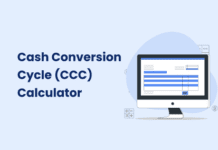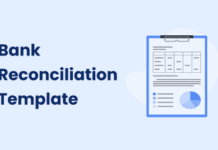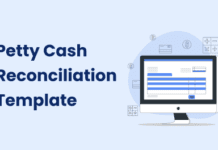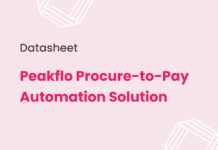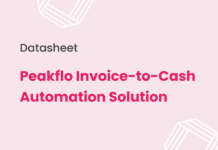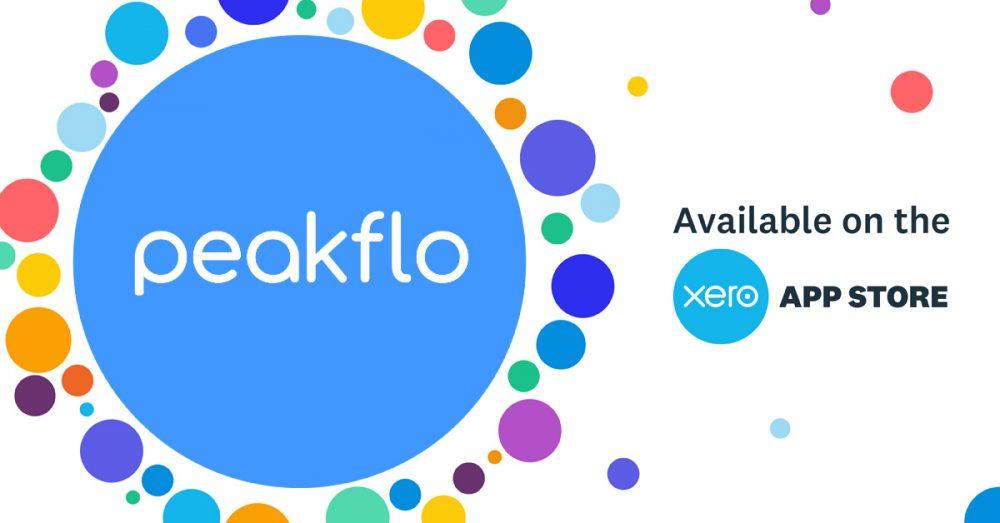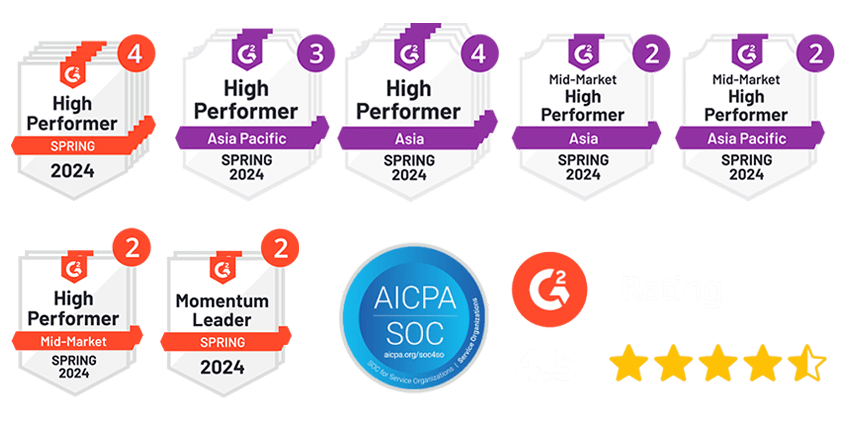AI automation promises have often fallen short of expectations. Most standalone AI agents achieve only 14-24% success rates on complex business tasks, leaving organizations frustrated with systems that can’t adapt to real-world conditions or changing requirements.
Agentic workflows change this dynamic by improving AI output accuracy by over 41% compared to conventional methods through breaking complex tasks into smaller, more manageable steps. Rather than relying on traditional AI prompting approaches, these dynamic processes allow models to plan, execute actions, and reflect on results through iterative cycles.
What are agentic workflows exactly? They’re structured processes where autonomous AI agents operate independently to achieve specific goals within defined environments. Organizations implementing generative AI through these workflows see improved operational efficiency, scalability, and more informed decision-making. Agentic workflows introduce critical elements like observability, inspectability, and discoverability by decomposing complex tasks into simpler sub-tasks and chaining them together in logical sequences.
The results speak for themselves. Using agentic workflow techniques on GPT-3.5 achieved 95.1% accuracy on the HumanEval benchmark, surpassing even GPT-4’s performance with traditional prompting methods. This demonstrates how the approach can significantly enhance AI capabilities regardless of the underlying model. These workflows adapt to real-time data and unexpected conditions, offering substantially more flexibility than conventional automation approaches.
Understanding agentic workflows and knowing how to implement them is crucial for organizations seeking reliable AI automation that actually works. You’ll learn everything about agentic workflows – from understanding their basic principles to implementing them for tangible business results. We’ll explore how they function, their essential building blocks, real-world applications, and the benefits and challenges they present for modern organizations.
Why Businesses Are Turning to Agentic Workflows
Businesses face unprecedented market volatility, with challenges ranging from workforce shifts to rising costs and supply chain disruptions. Many organizations are seeking better approaches to automation that can adapt to these changing conditions.
The shift from AI agents to agentic workflows
Standalone AI agents promised to handle complex business tasks autonomously. The reality has been disappointing. Current benchmarks show the top-performing AI agents achieve only about 14-24% success rates on complex tasks. This significant gap between promise and performance has prompted a strategic pivot.
Businesses are embracing agentic workflows—structured processes that break tasks into modular, verifiable steps. This shift represents a move from “magic to method,” transforming fragile agents into robust, orchestrated systems.
What makes this approach superior? Agentic workflows introduce critical elements absent in standalone agents:
- Observable processes that can be monitored and debugged
- Fallback mechanisms and human-in-the-loop checks
- Reusable components that accelerate implementation
Research indicates that even older AI models like GPT-3.5 can outperform newer ones like GPT-4 when deployed within well-designed workflows. This demonstrates that the orchestration approach often matters more than the underlying model.
Solving real-world problems with adaptive automation
Traditional automation approaches have often compounded complexity rather than reducing it. Industry studies show only about 30% of tasks in an organization follow predefined workflows, while the remaining 70% rely on a “collective memory” of operational methods embedded within company culture.
Adaptive automation addresses this reality by inferring work patterns rather than rigidly defining them. This approach proves especially valuable as hybrid working becomes the norm, with 80% of employees expecting to work remotely at least two days per week.
Real-world applications are already demonstrating value. Customer service operations project that agentic workflows will handle approximately 68% of customer interactions by 2028. Manufacturing businesses use adaptive production to respond in real-time to demand fluctuations and supply chain disruptions.
Agentic workflows: meaning in a business context
Agentic workflows represent AI-driven processes that can operate autonomously, adapt to changing conditions, and intelligently execute tasks without constant human oversight. Unlike traditional automation that follows fixed rules, these workflows integrate dynamic decision-making and continuous learning.
The business impact is substantial. According to McKinsey, AI could deliver an additional $200-340 billion annually through productivity improvements. For manufacturers specifically, agentic workflows can reduce operating expenses by 10-15%, saving up to $30 million annually.
By 2028, Gartner predicts agentic AI will be integrated into 33% of enterprise applications and influence approximately 15% of daily work decisions. This rapid adoption reflects the tangible benefits these systems provide: improved operational efficiency, reduced costs, and enhanced decision-making capabilities.
The shift to agentic workflows represents a fundamental change in how businesses approach automation, moving from rigid, predefined processes to adaptive systems that can truly capture the nuanced reality of operations.
How Agentic Workflows Actually Work
Agentic workflows operate through a systematic approach that blends human-like reasoning with automated execution. These systems don’t simply follow static instructions but actively adapt their processes based on changing conditions and incoming data.
1. Step-by-step breakdown of an agentic process
How do agentic workflows actually function? At its core, an agentic workflow follows a fundamental Thought-Action-Observation loop that drives its operation. The workflow begins when triggered by a user action, system event, or scheduled task. The process then unfolds through several key stages:
- Perception and input handling form the foundation. The system collects and processes information from multiple sources, including emails, databases, documents, and user activities. It cleans and structures this raw data into a usable format.
- Goal interpretation comes next, where the system parses the expected outcome from structured input or natural language, asking clarifying questions if needed. Task decomposition follows, breaking complex problems down into smaller, manageable subtasks organized according to priorities and dependencies.
- Tool selection identifies and activates the appropriate tools and resources needed to accomplish each subtask. During execution, actions are performed using selected tools, which might include databases, APIs, or other systems. Finally, evaluation assesses results after each action and determines the next steps.
This systematic breakdown reduces complexity and improves accuracy compared to traditional approaches that attempt to handle everything at once.
2. Role of planning, execution, and iteration
Planning serves as the foundation for effective agentic workflows. Through task decomposition, the system reduces cognitive load on the underlying models, improving reasoning and minimizing inaccuracies. This approach proves particularly valuable when the method to achieve a goal is unclear and adaptability is essential.
During execution, agentic workflows demonstrate remarkable flexibility. They use various tools based on specific task requirements, switch approaches if initial attempts fail, and fall back to alternative resources when primary ones are unavailable.
Consider this practical example: if an employee reports a WiFi issue, an IT assistant workflow might gather information, run diagnostics, check for outages through an API, reset settings, and either log the solution or escalate with a detailed report. The system adapts its approach based on what it discovers at each step.
What makes iteration so powerful? Rather than following predefined paths, these systems continuously evaluate what steps to take next based on real-time conditions. If an action doesn’t resolve a problem, the AI adjusts its approach dynamically instead of immediately escalating. This represents the crucial difference between agentic workflows and traditional automation.
3. Feedback loops and continuous learning
The most powerful aspect of agentic workflows is their ability to improve over time through structured feedback mechanisms. These systems implement a reflection pattern – a self-feedback mechanism where agents evaluate their outputs before finalizing responses or taking further action.
Feedback comes from multiple sources: self-evaluation by comparing expected versus actual results, human-in-the-loop reviews at strategic checkpoints, and other specialized agents providing critique.
This continuous feedback enables several critical capabilities: identifying and correcting errors without human intervention, adapting to changing circumstances in real-time, and refining approaches based on past performance.
The learning process involves both short-term and long-term memory components. Short-term memory maintains context during complex multi-step tasks, while long-term memory stores structured knowledge bases and historical data that the agent can reference when making decisions. This memory architecture allows agentic workflows to personalize interactions and improve over time.
These systems operate through a combination of perception, reasoning, memory, and continuous adaptation, creating workflows that can evolve based on experience rather than requiring constant reprogramming.
Building Blocks of an Agentic Workflow
Image Source: To Data & Beyond – Substack
Creating effective agentic workflows requires four fundamental building blocks that work together to enable autonomous operation. Each component serves a distinct purpose yet collaborates with others to form a system capable of reasoning, planning, and adaptation.
1. AI agents and LLMs
AI agents powered by large language models (LLMs) serve as the intelligent drivers of agentic workflows. These agents formulate plans, assess progress, and adjust course as they execute tasks toward complex goals. AI agents combine the cognitive capabilities of generative AI with action and automation across systems and data. The underlying LLM foundation provides the agent’s ability to reason, plan, and reflect while offering a conversational interaction layer for clarification or approval when needed.
Robust agentic workflows often use multiple specialized AI agents, each with different strengths and skill sets, working together to tackle complex processes. These specialized agents collaborate much like human teams, with each bringing unique capabilities to the workflow.
2. Tool integrations and APIs
AI agents require connections to external systems to accomplish meaningful tasks. Tool integrations and APIs enable seamless communication, data exchange, and task execution across different applications. These connections allow AI agents to access real-time data and execute actions in various environments.
Function calling represents a critical capability that enables agents to interact with the real world beyond simple text generation. The selection of appropriate tools can be predetermined or, in more sophisticated workflows, left to the agent’s discretion based on task requirements.
3. Prompt engineering techniques
Prompt engineering significantly influences the performance of agentic workflows. Key techniques that improve workflow effectiveness include:
Chain-of-thought prompting guides agents through logical reasoning steps, helping them break down complex problems systematically.
Few-shot learning provides representative examples for models to learn from, improving their ability to handle similar tasks.
Self-reflection enables agents to review and improve their own work, catching errors before they impact business processes.
Well-designed prompts ensure instructions are unambiguous, specific, and contextually rich, directly affecting the agent’s ability to make accurate decisions and produce reliable outputs.
4. Short-term and long-term memory
Memory systems separate effective agentic workflows from simple chatbot interactions. Short-term memory maintains context within a session through conversation history and current task progress, often implemented as rolling buffers or context windows. Long-term memory stores information across multiple sessions, enabling personalization and performance improvements over time.
Without effective memory management, agents lose context and repeat mistakes. Both memory types are essential for maintaining coherent conversations and improving through experience. Retrieval augmented generation (RAG) serves as one of the most effective techniques for implementing long-term memory, fetching relevant information from stored knowledge bases to enhance responses.
Memory architecture allows agentic workflows to personalize interactions and improve over time, creating workflows that evolve based on experience rather than requiring constant reprogramming.
Real-World Examples of Agentic Workflows
Image Source: Sendbird
Organizations across industries are implementing agentic workflows to solve complex business challenges that traditional automation couldn’t handle. These practical applications show how the theoretical concepts translate into measurable business results.
1. IT support automation
ServiceNow uses multi-step retrieval agents for IT service management, combining retrieval-augmented generation (RAG) with planning capabilities to automatically resolve complex support tickets. When an employee reports a WiFi issue, an AI-powered IT assistant gathers detailed information, runs diagnostics, checks for outages through APIs, and either resolves the problem or escalates with a comprehensive report. This systematic approach enables the system to identify solutions without immediate human intervention, reducing resolution time by up to 85%.
The workflow handles each support request methodically. Rather than following rigid scripts, the system adapts its diagnostic approach based on the specific symptoms and infrastructure involved. This flexibility proves crucial when dealing with complex IT environments where multiple factors can contribute to service disruptions.
2. Sales and lead enrichment
Clay’s lead enrichment tools demonstrate how agentic workflows can streamline sales operations effectively. Claygent automatically enriches inbound leads with relevant information directly in CRMs, helping sales teams focus on high-priority accounts. The system starts with basic contact information and fills in missing data gaps, converting personal emails to work emails or adding firmographic details.
For lead generation, Claygent searches across hundreds of premium data sources, verifies contact information, and customizes outreach based on prospect characteristics. One healthcare firm reduced candidate screening time by 90% using these capabilities. The workflow eliminates manual data entry and research tasks that typically consume hours of sales team time.
3. Research and data synthesis (ChatGPT Deep Research)
OpenAI’s Deep Research shows how agentic workflows can handle complex research tasks that require sustained focus and analysis. Unlike standard chatbot interactions, Deep Research operates independently for 5-30 minutes, browsing the web, analyzing content, and compiling structured reports with citations.
The system achieved an unprecedented 26.6% score on “Humanity’s Last Exam,” surpassing GPT-4o (3.3%) and Google’s Grok-2 (3.8%). This performance comes from the workflow’s ability to autonomously plan sub-questions, perform web searches, and synthesize results into citation-backed analyses. The approach transforms research from a reactive query-response pattern into a proactive investigation process.
4. Agentic RAG for enterprise search
Agentic RAG systems enhance enterprise information retrieval by dynamically pulling relevant data from various sources. Microsoft implemented this approach in their Copilot AI assistant, which retrieves current information from documentation and user forums rather than relying on pre-trained responses.
Financial institutions have particularly benefited from this approach. Morgan Stanley developed retrieval-based AI agents for internal financial research, PwC applied agent-based RAG in tax compliance automation, and JPMorgan Chase employed AI-driven automation for regulatory compliance. These systems handle multiple data sources simultaneously, delivering context-aware responses that improve over time based on user interactions and feedback.
Peakflo’s Agentic workflow represents the cutting edge of finance operations automation, changing how businesses handle critical financial processes. Unlike traditional rule-based RPA systems, Peakflo’s AI Agents function as intelligent finance teammates that think, speak, and act autonomously.
Benefits and Challenges of Agentic Workflows
Image Source: Multimodal
Organizations implementing agentic workflows see substantial benefits alongside notable challenges. Understanding both aspects helps businesses make informed decisions about when and how to deploy these systems effectively.
Advantages: adaptability, autonomy, scalability
Agentic workflows deliver remarkable adaptability by responding to real-time changes in their environment and adjusting actions to align with new priorities. This adaptability enables operational agility and resilience across various business scenarios, particularly valuable when market conditions shift rapidly.
The autonomous decision-making capabilities allow for real-time, AI-driven decisions without human intervention, saving manufacturers 10-15% in operating expenses, up to $30 million annually. Organizations can process more transactions and handle larger request volumes without adding staff, addressing the resource constraints many businesses face.
Agentic workflows offer unparalleled scalability. They manage increased workloads by distributing tasks intelligently and optimizing resource allocation, maintaining performance even during sudden demand spikes or seasonal fluctuations. This scalability extends across different industries and business sizes, from startups to global enterprises.
Challenges: complexity, reliability, ethical concerns
Managing agentic workflows presents significant complexity. Integration with legacy systems often requires substantial updates or custom solutions, as many existing systems lack modern, accessible APIs. Organizations need sophisticated algorithms, extensive computational power, and specialized infrastructure.
Reliability remains a critical concern. Even with 99% accuracy, a large enterprise could face hundreds of errors monthly, potentially leading to significant financial losses. AI agents must protect sensitive user data and comply with regulations like GDPR, implementing strict protocols including data minimization and encryption.
Ethical implications raise questions about accountability, bias, and transparency. When autonomous AI systems make errors, determining responsibility becomes challenging—is it the developer, deployer, data, or the AI itself? A 2022 study found that AI bias can cost companies an average of $100 million per year.
When to use agentic workflows vs. simpler automation
Organizations must carefully evaluate when to implement agentic workflows. These systems excel in complex, dynamic environments requiring adaptability and continuous learning. Simpler automation suffices for straightforward, repetitive tasks that don’t need real-time adjustments or decision-making.
The key consideration is complexity versus reliability requirements. For processes with high variability and changing conditions, agentic workflows provide the flexibility that traditional automation cannot match. For predictable, routine tasks, simpler solutions often deliver better value with lower risk.
Finance teams using Peakflo’s Agentic workflows don’t just save time—they reclaim control with traceable, intelligent conversations fully integrated into their systems of record. Experience the future of finance operations with significantly reduced manual effort—schedule your personalized demo today and discover how AI can transform your financial workflows.
A Way Forward
Agentic workflows represent a fundamental shift from traditional automation approaches. Rather than relying on rigid, predefined processes, these systems adapt to changing conditions and handle complex business scenarios through methodical, observable steps.
The move from standalone AI agents to orchestrated workflows addresses real business challenges. Organizations implementing agentic workflows see improved operational efficiency and more reliable automation outcomes. The key lies in the structured approach—breaking complex tasks into manageable components with clear fallback mechanisms and human oversight points.
What makes agentic workflows particularly valuable? They combine the reasoning capabilities of AI with practical business applications. The building blocks you’ve explored—from AI agents and tool integrations to memory systems—work together to create systems that learn and adapt while maintaining transparency in their operations.
Real-world implementations demonstrate tangible benefits across industries. Whether handling IT support tickets, enriching sales data, conducting research, or managing enterprise search, these workflows deliver measurable improvements in efficiency and accuracy.
Automation tools provide accuracy and efficiency that manual methods cannot match. As these technologies continue to mature, their ability to enhance human capabilities while reducing routine work will become increasingly important for competitive advantage.
Try out Peakflo today, and witness how agentic workflows can transform your business operations with intelligent automation that adapts to your specific needs.
FAQs
Q1. What exactly is an agentic workflow?
An agentic workflow is an AI-driven process that operates autonomously to achieve specific goals. It breaks complex tasks into manageable steps, adapts to changing conditions, and makes decisions without constant human oversight. These workflows combine AI agents, tool integrations, and memory systems to handle intricate processes across various business functions.
Q2. How do agentic workflows differ from traditional automation?
Unlike traditional automation that follows fixed rules, agentic workflows can adapt in real-time, make dynamic decisions, and learn continuously. They’re capable of handling complex, multi-step tasks that require reasoning and planning, whereas traditional automation is best suited for straightforward, repetitive processes.
Q3. What are some real-world applications of agentic workflows?
Agentic workflows are being used in various industries. Examples include IT support automation to resolve complex tickets, sales lead enrichment tools that automatically gather and verify prospect information, AI-driven deep research systems that compile comprehensive reports, and enhanced enterprise search capabilities using retrieval-augmented generation (RAG).
Q4. What are the main benefits of implementing agentic workflows?
Key advantages include improved adaptability to changing business conditions, autonomous decision-making capabilities, and enhanced scalability. These systems can significantly reduce operating expenses, increase efficiency, and enable businesses to handle larger workloads without adding staff. They also offer continuous improvement through learning and adaptation.
Q5. What challenges should businesses consider when adopting agentic workflows?
While powerful, agentic workflows come with challenges such as implementation complexity, reliability concerns, and ethical considerations. Integration with existing systems can be difficult, and even small error rates can lead to significant issues at scale. Organizations must also carefully consider data privacy, bias mitigation, and accountability when deploying these autonomous systems.

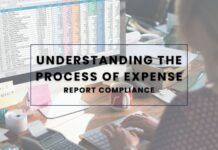







![Why AI Sales Calls Are Making Good Sales Reps Even Better [2025 Guide] ai sales calls](https://cdn-kmjmp.nitrocdn.com/YvtqmrsiHUxqerlSiZgbfzqqTARWTElr/assets/images/optimized/rev-834053b/blog.peakflo.co/wp-content/uploads/2025/09/65168cf6-3001-4733-8cbc-12d5684cf449-218x150.webp)










